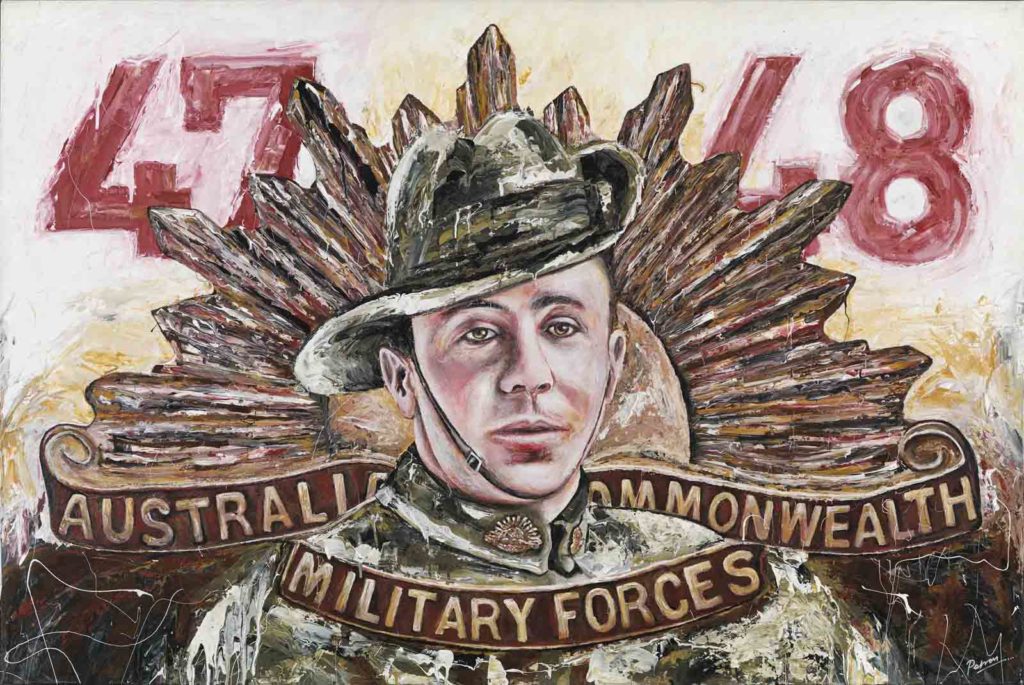Sergeant Stanley Robert McDougall
Stanley Robert McDougall (1889-1968), soldier and forester, was born on 23 July 1889 at Recherche, Tasmania, son of John Henry McDougall, sawmiller, and his wife Susannah, née Cate. Educated locally, he took up blacksmithing and served his time at this trade. He was an excellent horseman, an expert marksman, a competent bushman and an amateur boxer.
Illness prevented him from enlisting in the Australian Imperial Force until 31 August 1915 when he was posted to the 12th Reinforcements to the 15th Battalion. In Egypt, on 3 March 1916, he was drafted into the 47th Battalion and embarked for France in June. The battalion fought at Pozières Heights in August and in the battles of Messines and Broodseinde in 1917. Appointed lance corporal on 5 May 1917, McDougall was promoted corporal in September; he became temporary sergeant in November and was confirmed in that rank next January.
McDougall was awarded the Victoria Cross for his actions at Dernancourt on 28 March 1918. He was on watch at a post on the 47th’s right flank when he heard Germans approaching. When a Lewis-gun team was knocked out by an enemy bomb McDougall snatched up the gun, attacked two machine-gun teams and killed their crews. He turned one of the captured machine-guns on the enemy, killing several and routing one wave of their attack. Meanwhile about fifty Germans had crossed a section of railway which the Australians had held. McDougall turned his gun on them and when his ammunition was spent he seized a bayonet and charged, killing four men. He then used a Lewis-gun, killing many Germans and forcing the surrender of the remaining thirty-three.
Eight days later, in the same location, McDougall was awarded the Military Medal. During a heavy enemy attack he got a gun into position and enfiladed the Germans at close quarters. When the gun was hit he crawled some 300 yards (275 m) under fire to get a replacement; he then took command of the leaderless platoon for the rest of the action. He was posted to the 48th Battalion on 28 May. At Windsor Castle on 19 August he was invested with the Victoria Cross by King George V and shortly afterwards returned to Australia where he was discharged from the A.I.F. on 15 December 1918.
McDougall entered the Tasmanian Forestry Department and in the early 1930s became an inspector in charge of forests in the north-western part of the State. He several times performed outstanding organisational and rescue work during bushfires. He was living at Scottsdale before visiting London for the V.C. centenary in 1956. McDougall died on 7 July 1968 at Scottsdale, survived by his wife Martha, née Anderson-Harrison, whom he had married in 1926.
The uniform he wore and the Lewis-gun he used at Dernancourt are displayed in the Australian War Memorial Hall of Valour with his Victoria Cross and Military Medal. The memorial also has a portrait of him by Frank Crozier.


